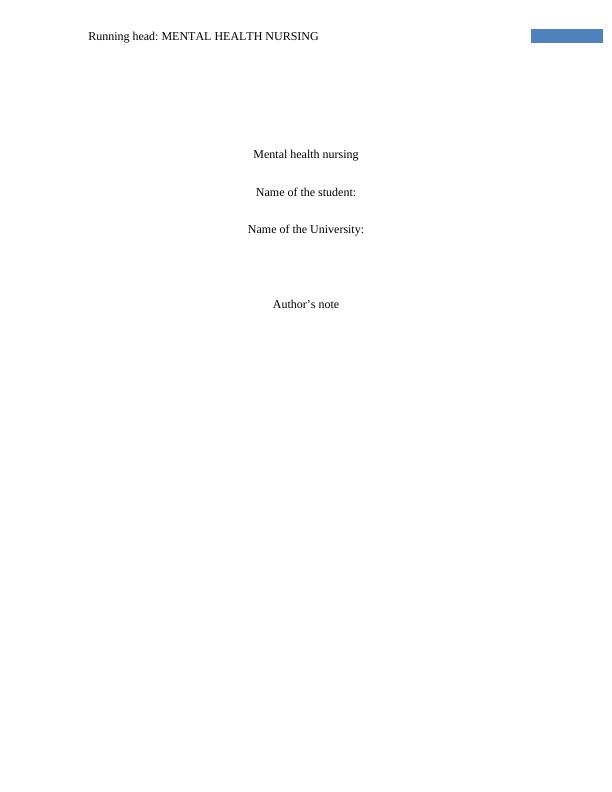Utility and Clinical Effectiveness of Cognitive Behavioural Therapy (CBT) in Treating Common Mental Disorders
Write a 2000 word essay about a therapeutic approach in mental health nursing, including a description of the approach and a critical discussion of its effectiveness.
12 Pages3383 Words247 Views
Added on 2023-06-04
About This Document
The essay gave an insight into the utility and clinical effectiveness of one of the psychotherapeutic approach called the CBT in treating common mental disorders like depression, anxiety disorder and personality disorder.
Utility and Clinical Effectiveness of Cognitive Behavioural Therapy (CBT) in Treating Common Mental Disorders
Write a 2000 word essay about a therapeutic approach in mental health nursing, including a description of the approach and a critical discussion of its effectiveness.
Added on 2023-06-04
ShareRelated Documents
End of preview
Want to access all the pages? Upload your documents or become a member.
Cognitive Behavioral Therapy Case Study 2022
|8
|1976
|24
CBT - Mindfulness-based cognitive theory
|11
|3021
|20
Treatments and Therapies for Mental Health: Psychodynamic, Somatic, and Behavioural Approaches
|2
|1284
|238
Cognitive Behavioural Therapy Assignment Report
|11
|3018
|20
Cognitive Behavior Therapy (CBT) - An Overview, Strengths and Limitations
|18
|5245
|363
Treatments and Therapies for Mental Health: Psychodynamic, Somatic, and Behavioural Approaches
|6
|1476
|194




